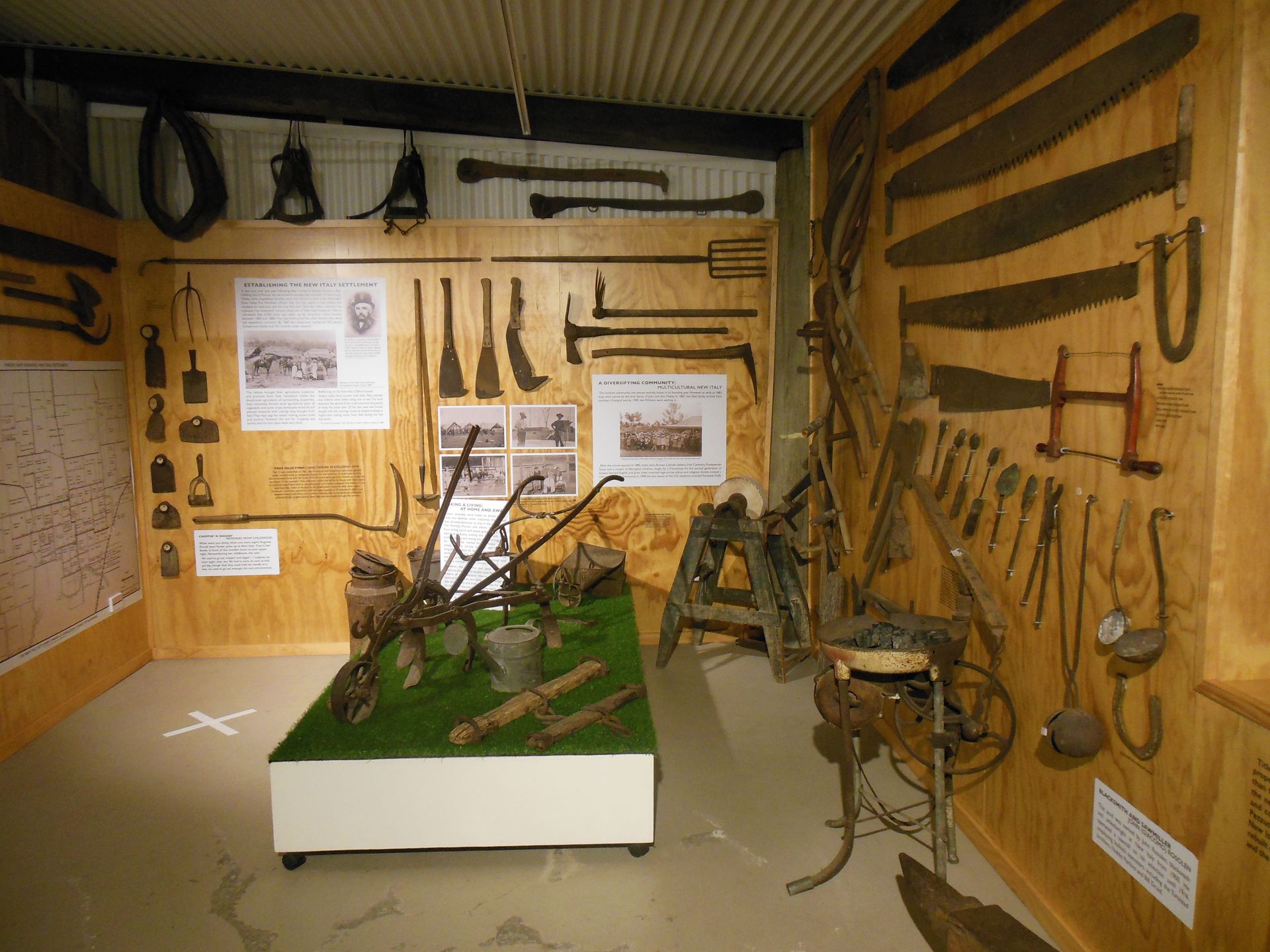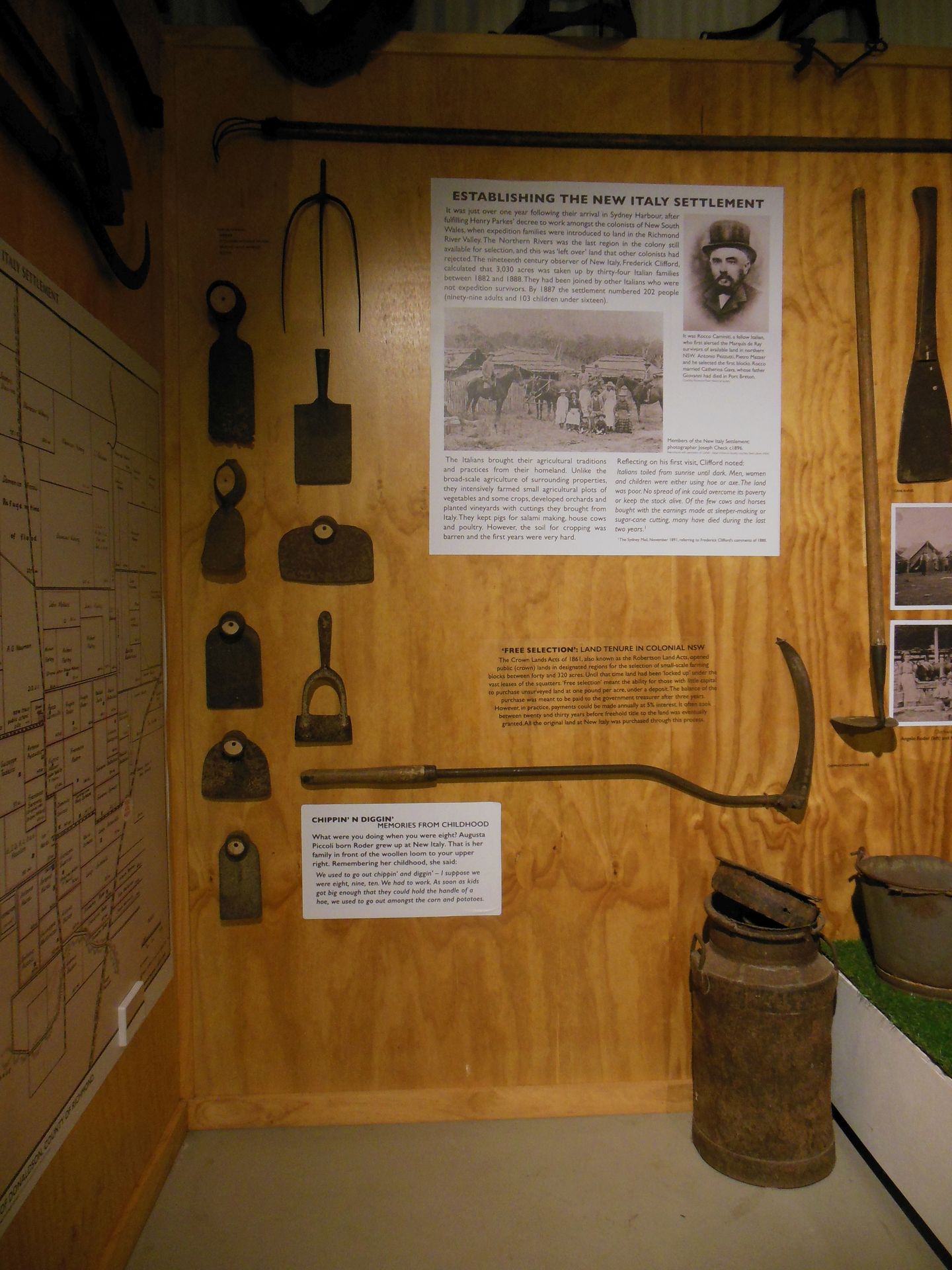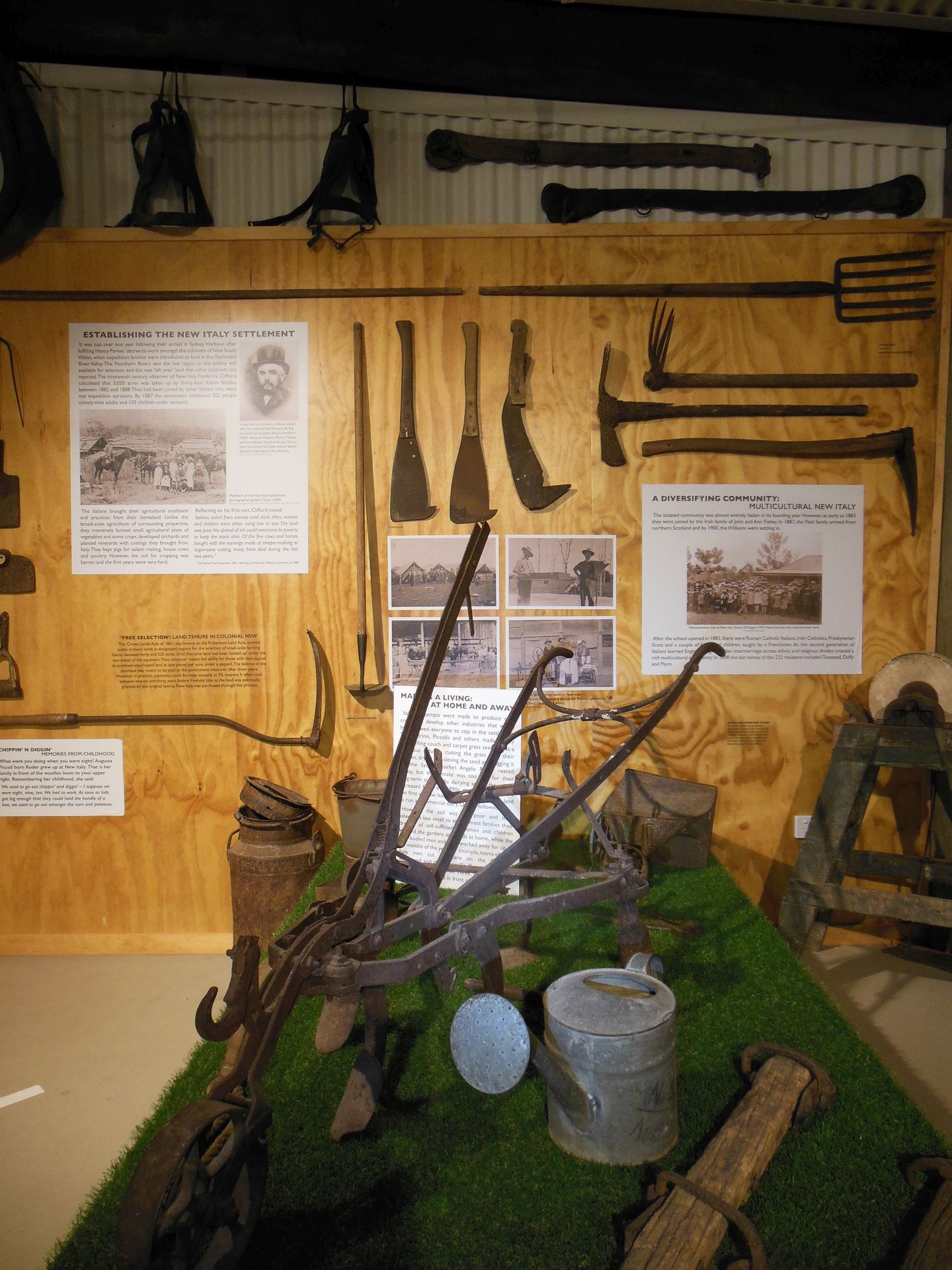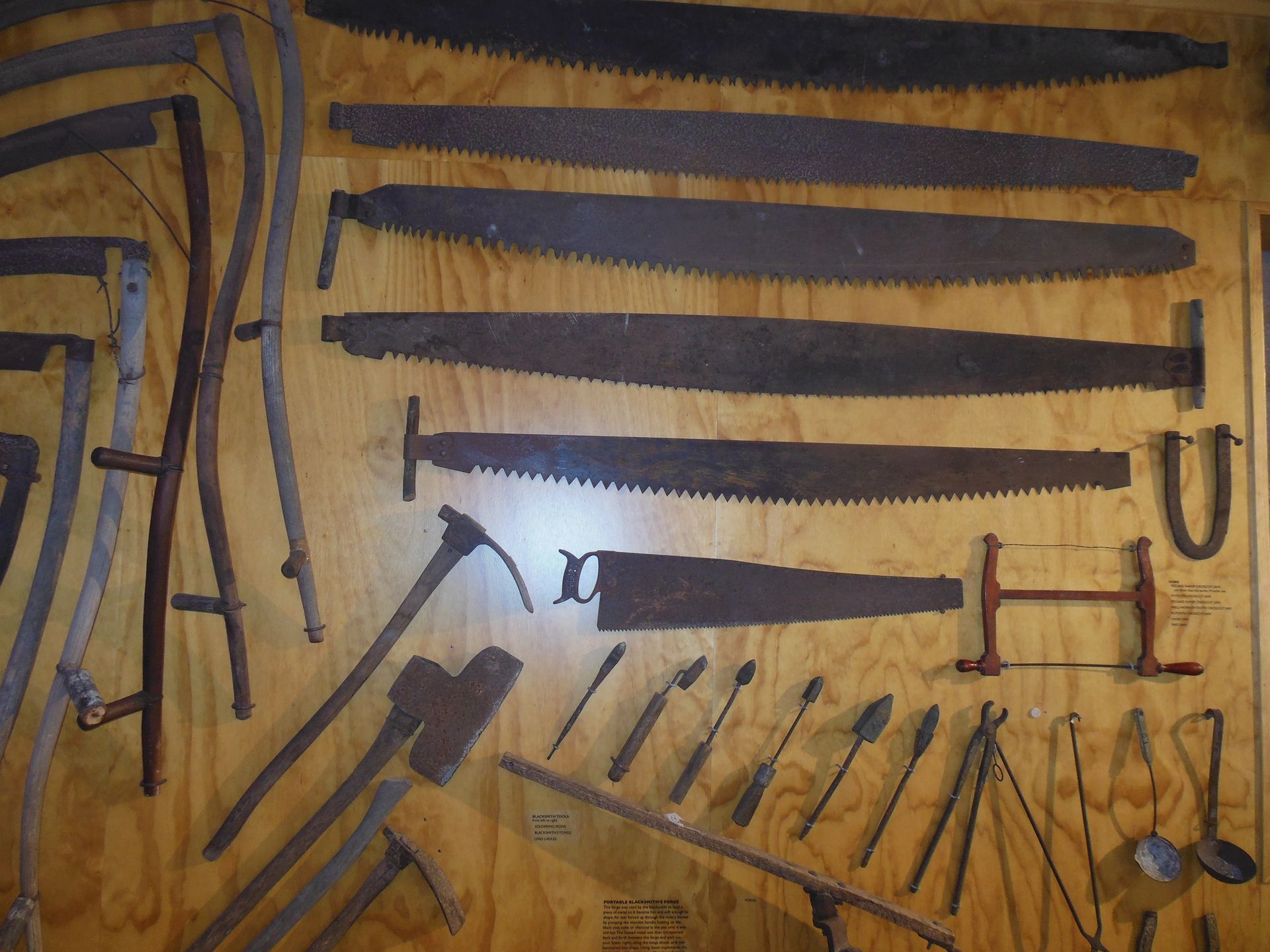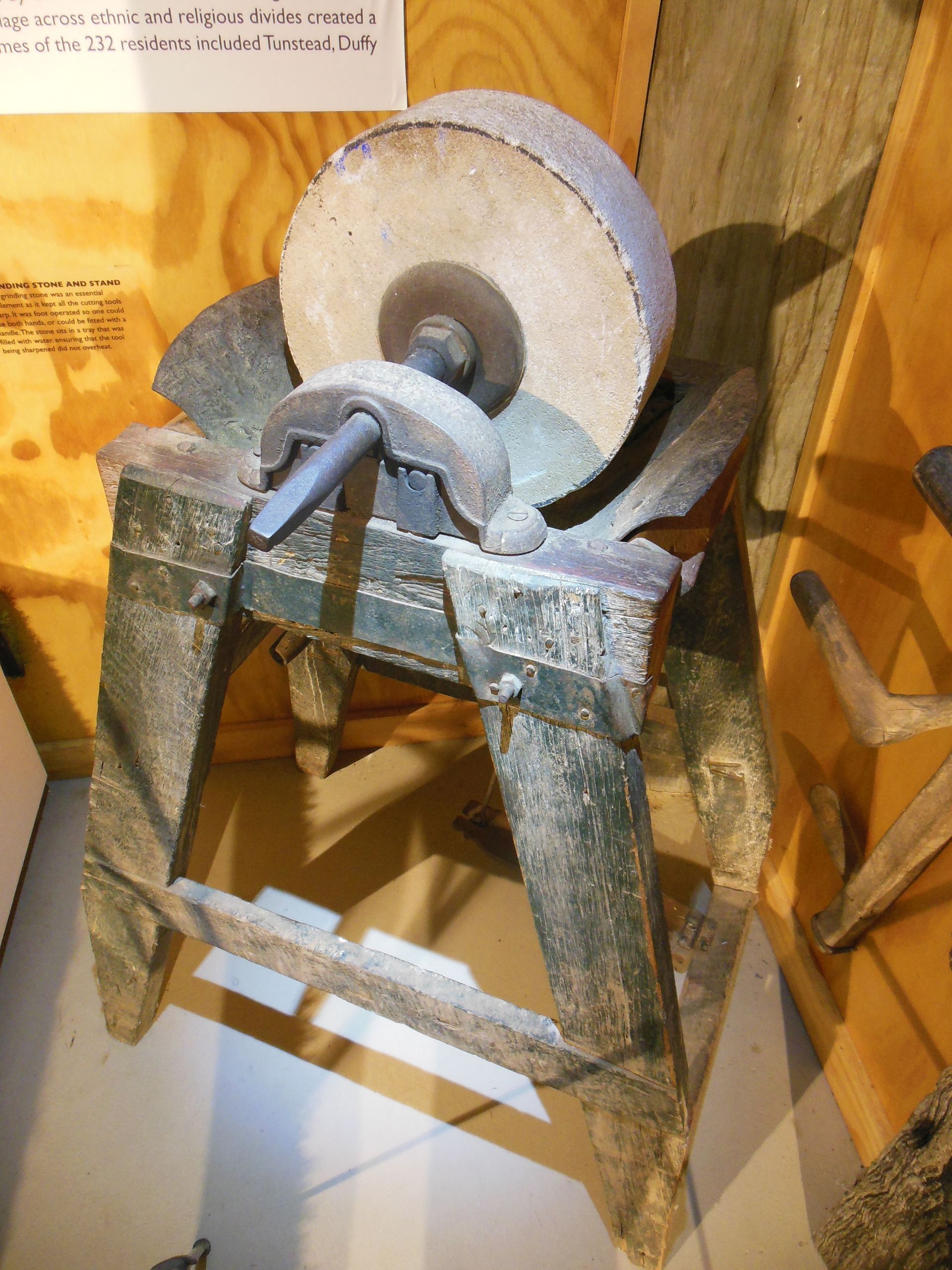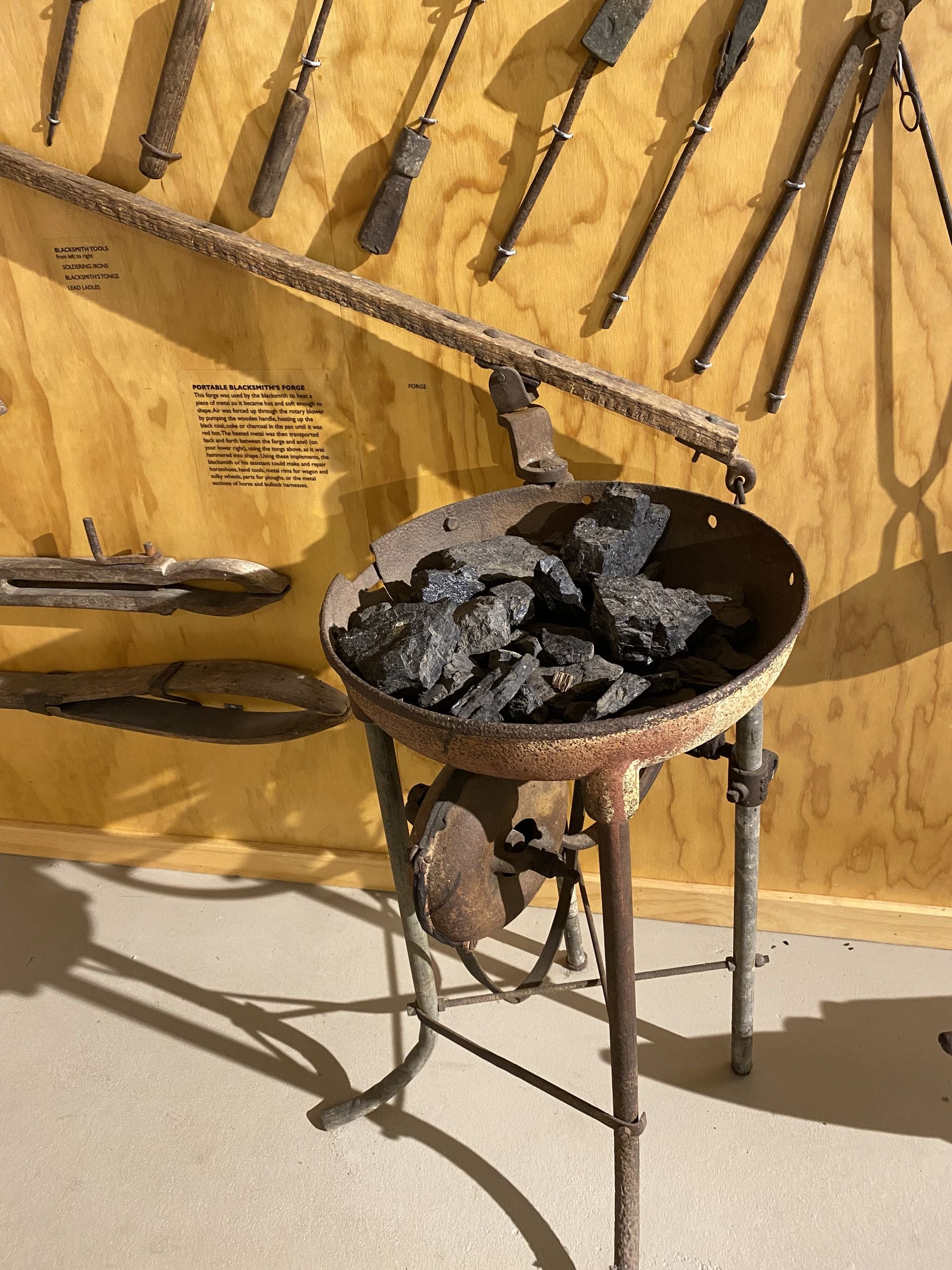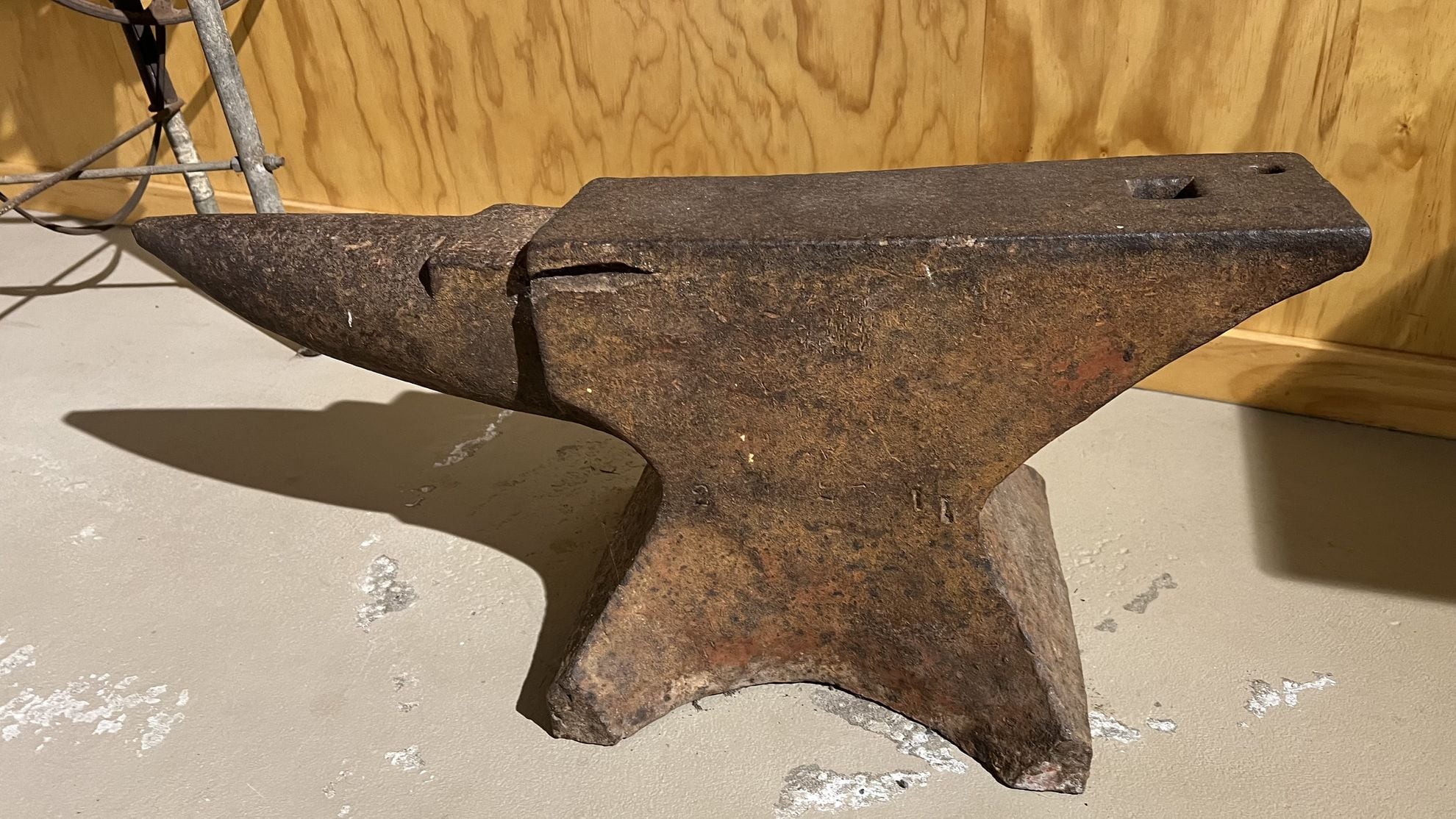TOOLS: MAKING A PLACE AND WORKING THE LAND
A tool should do at least half the work.
This was a harsh landscape to mould into the imagined farming community of the Italian settlers’ dreams. However, just like the colonists before them who cleared the original forests, the men, women and children of New Italy created their homes using the resources around them, their multiskilling and the tools that made it possible.
Many of the tools on this wall were multipurpose – used to cut down the timber, make the built structures and bring money into the community. Crosscut saws and axes were used to clear the timber that was then used for building the houses and for cutting into sleepers for sale to Melbourne and Sydney markets. To your left, the broad or squaring axe, made either as left or right handed, was flat on one side to cut/square the edges of the logged timber to make beams and rafters or sleepers. The adze then smoothed the log face so that moisture couldn’t penetrate any chunks left by the squaring axe. The morticing axe made the hole or mortice into which another length of wood was fitted. These were the same tools used to make the post and rail fences that surrounded each farm, like the one standing on the Pacific Highway side of this property.
Look above – these are augers that were twisted into the wood to drill a hole. The wooden mallet on the right was used to pound joints into place when assembling post and beam structures or to hit the shingle cutter below it. And imagine having to lean all your weight onto the breast drill and hand-turn to make a hole in metal. Below that is a maul, with its large wooden head and metal handle. One of its many uses was to belt a metal wedge into a log to split off narrow shingles for roofing, as demonstrated at your feet.
All the early cottages were made of wooden slabs with shingle roofs. Later, a few families built two-story pise or mud houses in a style reminiscent of their homeland – like the replica of the Antoniollis’ house and store, here in the museum complex. The mud came from a corner of the Pezzuttis’ property. Most properties had a mud-built well, their only water supply in the early days as there were no permanent creeks or bores. And even the timber cottages often had a mud-walled cellar to keep their salamis, cheeses and other produce cool.
Blacksmithing
This forge was used by the blacksmith to heat a piece of metal, so it became hot and soft enough to shape. Air was forced up through the rotary blower by pumping the wooden handle, heating up the black coal, coke or charcoal in the pan until it was red hot. The heated metal was then transported back and forth between the forge, and anvil, using the tongs, as it was hammered into shape. Using thieves, implements, the blacksmith or his assistant could make and repair horse shoes, hand tools, metal rims for wagon and sulky wheels, parts for ploughs, or the metal sections of horse and bullock harnesses.
Blacksmith and sawmiller, John (Giacomo) Rosolen – this anvil was owned by John/Jack Rosolen, blacksmith and wheelwright at New Italy from 1900. He operated a sawmill on his selection until 1916, employing bullock teamsters, including the Tunstead brothers, Nobby Perkins and Bill Druid.
<< (11) Making a Living
>> (13) Making Home


